Mark Mallinson is President of Resonessence Labs and along with his brother Martin, launched the company in  2009. Prior to this Mark was the Operations Director for ESS Technology where his team was responsible for the design of the company’s Sabre Audio DAC chips. Mark left ESS in 2009 to start Resonessence Labs…a coincidence?… Mark laughed and said ‘not really!’ The brothers saw a business opportunity.
2009. Prior to this Mark was the Operations Director for ESS Technology where his team was responsible for the design of the company’s Sabre Audio DAC chips. Mark left ESS in 2009 to start Resonessence Labs…a coincidence?… Mark laughed and said ‘not really!’ The brothers saw a business opportunity.
Sabre Audio products from ESS are now employed in many high end systems, but back in 2009 Mark and Martin noticed that some audio companies were not doing a particularly good job of designing the chip into their products and felt that they could do better. Resonessence launched their first Audio DAC product, Invicta in 2011 and now have 6 DAC products ranging in price from $350 CAD to $4,995 CAD.
Mark states, ‘Our goal is to produce audio products that we can all be proud of. To this end we design, manufacture, assemble and test our all of our products locally.’
Resonessence Labs’ products are ‘Field Upgradeable’ giving the end user the ability for hardware and software tweaks and changes, which presents interesting options for those in the know and with the required skills.
Review Overview
I have a few options in the way I could use the £299 Herus in my system:
– As intended from a USB source such as the Mac or Squeezebox Touch (SBT) then with an iOS and Android tablet (Resonessence claim compatibility with IOS and Android devices) with a range of different headphones to throw into the mix.
– Secondly I planned to use the Herus as a standalone DAC feeding the Icon Audio HP8 valve headphone amp.
– Lastly as standalone DAC into my main rig.
– I also have a few different USB cables ranging from the modest in price Chord Silver Plus and Wireworld Starlight 7 to the more expensive Tellurium Q Black Diamond and another option the Astintrew Concord which has a split data and power cable.
Using the Herus as intended (as a combined DAC and headphone amplifier)
Firstly was to use the Herus fed by the USB of my SBT using the free ‘Enhanced Digital Output’ software. Plug  in the Herus (red backlit logo) and enter the Audio settings on the SBT, navigate to the Digital Output menu (where the Herus now shows up as a selectable device), a quick click and the SBT reboots with the Herus showing as the device ready for use (now a blue backlit logo on the Herus to inform the user of lock on). I plugged in a pair of AKG K702’s into the device and the Chord Silver Plus USB and unchecked the fixed volume control on the SBT in order not to damage the headphones – the Herus as it has no volume control itself and is fixed at full output. Without going into all the techy details basically the source’s volume control becomes obsolete and the on screen volume slider actually is the Herus’ internal volume which is transposed onto the screen so to speak.
in the Herus (red backlit logo) and enter the Audio settings on the SBT, navigate to the Digital Output menu (where the Herus now shows up as a selectable device), a quick click and the SBT reboots with the Herus showing as the device ready for use (now a blue backlit logo on the Herus to inform the user of lock on). I plugged in a pair of AKG K702’s into the device and the Chord Silver Plus USB and unchecked the fixed volume control on the SBT in order not to damage the headphones – the Herus as it has no volume control itself and is fixed at full output. Without going into all the techy details basically the source’s volume control becomes obsolete and the on screen volume slider actually is the Herus’ internal volume which is transposed onto the screen so to speak.
I began to play some Stevie Nicks. The presentation of the sound was crisp and clean, with a great openness to the vocal, a typical sound for these headphones I felt. I continued to play on through some more vocal and acoustic based albums from the likes of Chris Jones, Norah Jones and Jack Savoretti concluding that the Herus was extremely transparent to the character of the source and headphones, but I was concerned that the top end was a little too sharp and the headphones, although extremely revealing even with the Icon valve amp, has a tamer top end which can be exploited and refined to expose some beauty in the detail and so I tried swapping out the Chord USB for the Wireworld Starlight 7.
Playing Annie Lennox’s ‘Little Bird’ proved that a simple change of the cable calmed down a slightly spittier response, yet still retained the source’s character along with the revealing presentation of these headphones. I have a tendency to listen to headphones very loud, not great for the lug-holes but it’s a fetish of mine. Even if it’s late at night and I’m just intending to play some gentle background type music within 6 or 7 tracks the volume is cranked right up, so for me at louder volumes I need to be able to hear the clarity of a track especially with these cans, otherwise it’s headache time after a while.
The Herus in this respect came across to me fantastically, the amplifier inside is very powerful and belies the units size, driving these headphones to volume levels I really never expected, distorting minimally as the full volume was nearly reached and remaining clean and neutral.
Using the Herus with the Tellurium Q Black Diamond USB cable was a step up in performance again, cleaning and expressing a midrange that breathed with presence in the soundstage and giving a noticeably greater width to the sound. Smaller details were more defined and cymbal work especially shimmered very realistically. Bass which had been taut and tuneful gained more detail and rhythm which was gratefully received especially with Electronica.
The last USB option I had with this rig was to try Astintrews ‘Concord’ USB with has split power and data cables and their patented power supply design. This gave a punchier and little leaner upper-bass/lower-mid response, most noticeably a lower noise floor which added a really nice spaciousness to the sound – to be expected I guess from what I have heard with this device partnered with my Mac already.
The modded SBT is already very quiet, but the Concord did take the background hash down a little further and due to the AKG’s having that extremely revealing presentation they were ideal for this part of the review and the Herus was left as the true heart of the system, decoding and amplifying a sound that was complete in resolution and powerful enough to really drive the AGK’s very well indeed.
When listening to the Civil Wars ‘I’ve Got This Friend’ the Herus presented remarkable detail in the string work and each vocal was beautifully rendered in harmony stating there own position on the track, clearly defined and wonderfully recorded.
The transparency, accuracy and robust presentation of the Herus is absolutely astonishing, each piece of music sounds the way it should. Listening to specific music for certain attributes when testing equipment is something we all do and I can quite confidently say that the Herus ticks virtually every box for me. Critically against much more expensive headphone and DAC combos there will be flaws of course, but I have ticked way more boxes than I ever expected and more than with my previous PS Audio DAC combined with other standalone headphone amplifiers around the £300-£500 mark. The resolution, detail, excellent dynamics and balance that the Herus has is pretty awesome.
Further testing with other headphones
An obvious next test to confirm some of my initial thoughts would be for me to try other headphones, fortunately enough I have a pair of Sennheiser HD598s and some Beyerdynamic DT-990s, both very different from each other and from the AKG’s.
Leaving the Concorde USB in to exploit the best of the Herus and reveal as much of the other headphones character partnered with the amp/dac as possible I plugged the Beyers full size jack into the tiny Herus.
I’m not a great fan of these partnered with the Icon amp, I feel they thrive with good solid state amps, They can be a tad laid back, have a gorgeous midrange but can lack that bit of air in the top end. The Herus really exploited the midrange as suspected, darker than the AKG’s but wonderfully rich and fleshed out, I like the Beyers on the Epiphany Acoustics head amp very much but found the Herus to transmit better low end grip into them, the top end never got that air like with the AKG’s, yet still had a nice sharpness and sparkle with great clarity and control, it was all just a little darker and not as transparent sounding, still very true to the source I feel and the character of the headphones, fantastic for some genres and poorer recordings, but after listening to the 702’s just lacked that bite and punch, I’m sure if I listened to them first I would have raved about how well the Herus drove the 300 Ohm load and how fantastic I thought they sounded, but then that has to simply be down to me and my personal preference of cans and in no way makes light of the Herus’ charms.
Onto the Sennheiser HD598’s which are a great and not too expensive, fun headphone and on the little Resonessence amp these for me are a great match both sound-wise and price point-wise. Clarity and vocals are at the forefront of their presentation with a fantastic volume level that would be more than adequate for anyone – even me!
Back in went the Wireworld cable and the smoother and less clean sound that it gave against the Astintrew was actually preferable – overall a more fun, musical and bouncy sound rather than a more revealing type of sound that has you listening out for details and attributes. I spent a fair bit of time with this combination in place, writing part of this review and surfing around the net on my iPad, feet up and rocking backwards and forwards in my computer chair, probably with a daft grin on my face!
I even put a stock USB into the Herus from the SBT as I realised I hadn’t done that (I always use a better than stock USB cable for piece of mind for build quality on everything) and even with that in place I was happy with the presentation of the Herus, although I would recommend something mid priced as it does help performance.
Android and IOS device tests
Resonessence Labs claim on their website that the device is compatible with iOS and Android devices – fantastic, so I can take the Herus anywhere I go and enjoy my Spotify playlists in their full glory!
I’d ordered the camera connection kit for the iPad Air assuming that this must be the way to connect the USB type B connector on the Herus to the iPad. Plugging the adapter into the iPad with a normal A to B USB cable illuminated the Herus’ logo in red and then quickly into blue to confirm that a lock and compatibility was made. Next I simply chose the device from the Airplay menu and I was away.
Sound wise the Air sounded fantastic through the little DAC/amp, the Herus’ balanced and powerful sound drove the three sets of headphones great, though I found the iPads physical buttons when streaming Spotify gave larger than preferred volume increases/decreases but moving the volume slider in the software gave a more precise control to the listening levels.
I had a little bit of a setup issue initially using the Android based LG G Pad 8.3″ V500. I had bought a few variations of adapters and connecting cables to achieve what was a micro USB to required male B into the Herus. Using a micro USB ‘Host’ adapter cable which had a female A socket to micro USB male cable proved the answer, although its simple adapter duplicate did not work so make sure it is the ‘Host’ cable type adapter you use.
Again no complaints with the sound, the Herus sounds great in all tests and only has moderate levels of increased performance with the more expensive USB cables and I would be satisfied with a well made and inexpensive cable. Characterisation of the sound does vary dependant on source, but the control and balance of the Herus’ DAC and amp’s sound prevails to keep everything neutral and very musical.
Using the Herus as a Standalone DAC (Icon Audio HP8 Headamp)
To achieve the connection to the Icon I used a 6.3mm headphone jack to stereo RCA adapter from the Herus and my Oriton Symphony Orange RCA interconnects and as the Astintrew cable was still on the desk I re-plugged it in to the Herus from the SBT feeding the AKG headphones.
A very similar character as previously mentioned was heard through the Icon as I revisited tracks and albums from this review, the Icon added some great liquidity to the vocals with the Civil Wars playing and gave more control to louder listening levels in the upper regions. Lower mids and upper bass were fuller with transients a little more energetic. Not big differences in the performance really just the flavours.
Comparing the presentation to the Totaldac through the Icon was interesting, there were differences in performance and a slightly different character, an obviously perceivable tonal difference between valves and transistors but to the credit of the Herus I thought ‘well I could definitely live with this’.
Popping in Chords Crimson Vee3 with the Wireworld cable again for sensibility against price point retained my previous thoughts. I also tried the recently reviewed QNKTC DAC in placement of the Herus and found its upper end to be quite sharp considering my favourable comments about it in the main rig. I found the overall enjoyability and musicality of the Herus to be closer to the Totaldac than the QDAC which isn’t as transparent and doesn’t allow the SBT to show its character.
Using the Herus as a Standalone DAC (main system)
Using the SBT to Herus via the Asintrew cables and into the Emille KI40-L integrated via the Oriton interconnects connected to the Herus via the adapter I immediately took note of the superbly balanced and detailed sound. Consequently whilst using the same setup through the Mac using Amarra there was a noticeable bass hump around the lower mids/upper bass, a trait of the Mac which in the QDAC review was most favourable to its character but here, hearing the difference between the SBT and Mac, the hump does get a little irritating in comparison to the modded SBT’s extremely detail driven bass which is neither too tight or loose.
The Herus with its ability to pass through what’s in front of it accurately really gelled well in this context and supplied the amp and speakers with a tremendous amount of information and imaging with a great tonal balance across the frequency range. I would conclude that the DAC, although not as critical in exploring the finest of details, the extended handling of notes, or the dynamic shifts of the much more expensive Totaldac, was a very respectable achiever in conveying a solid and most enjoyable music performance from 16bit and 24bit music streamed from the NAS.
Conclusion
Using the Herus as a portable device outside of the house is of course possible but it would require some careful laying out of the cables in a pocket as there would be a couple of connections from an iOS or Android based smartphone and of course the headphone connection itself. My concern would be with the connection to the phone itself as most smartphones these days have the smallest of connectors which could easily break or damage the sockets, so not ideal. I myself would still prefer a small Fiio for outdoor purposes, however if there was an option for Resonessence to add a small Bluetooth module with the correct USB socket and an integrated rechargeable battery then for outdoor use it would be a winner.
Indoors and listening from a PC or Mac or as an upgrade to a gaming rig the Herus is simple to use and sounds very ‘audiophile’ and extremely musical.
The Herus can perform how you would like it to with a good chunk of its character being source and headphone dependant, it has enough power to please even the daftest of loud listeners. If there was any sort of characterisation I could pin on the Herus apart from its obvious transparency it is that with all the headphones and USB cables I used I never got a bass heavy approach to any of the combinations or genres – bass is very evenly balanced and never overblown in any way but it’s all there. I have heard more bass from these headphones through other amps but not as detailed and taut a bass in some cases. With headphones I have to have a shining midrange and an open and airy top end and the Herus caters to this perfectly. Coupled with fantastic detail and tone the tests on this products primary intended use are extremely positive and the fact it requires no external power supply means it can be taken anywhere with the above caveats about cabling?
As a standalone DAC with the Astintrew Concord supplying a clean power source the Herus was elevated in performance, although in standard form without upgraded cables made for a fantastic companion and upgrade to any computer streaming rig with a solid, detailed, robust sound which completely took me aback for its size and price point and with the ability to simply whip out the connecting analogue cables and pop in the headphones it covers both areas of listening with a computer based audio system wonderfully.
Highly recommended for its ease of use, flexibility and high fidelity sound quality.
Author – Danny Worth
How we carry out reviews.
Read more Hifi Review.



















































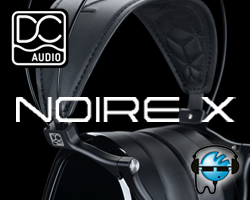


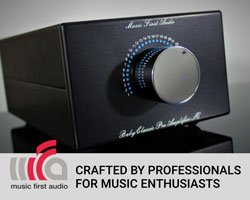





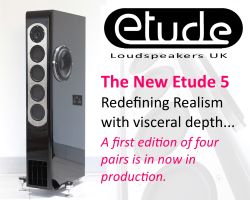


















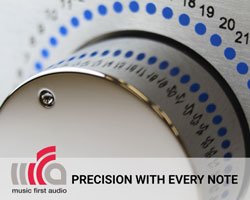











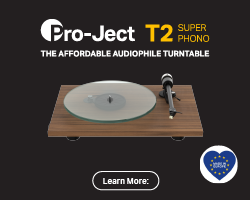

















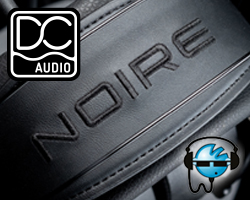





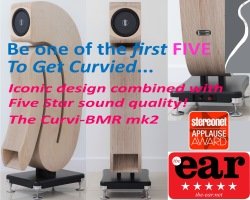

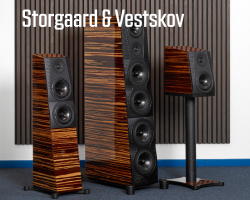
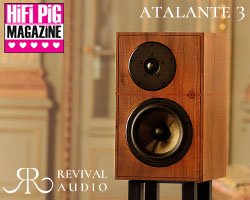












































You must be logged in to leave a reply.